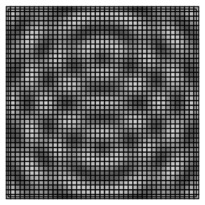En cliquant sur une imagette, vous accéderez au source et à l'image. En cliquant sur cette dernière, vous ouvrirez le fichier PDF associé.












/* -*-ePiX-*- */ #include "epix.h" using namespace ePiX; double f(double x) { return 0.4*exp(-x*x/sqrt(M_PI)); } double g(double x) { return f(x-3); } double PAD_X=0.4, PAD_Y=0.01; const double legend_x=4.5, dx=0.25; const double legend_y=0.35, dy=0.15*0.075; int main() { bounding_box(P(-3-PAD_X,-PAD_Y),P(8+PAD_X,0.4+PAD_Y)); unitlength("1in"); picture(5.5,4); begin(); degrees(); grid(1,1); fill(); gray(0.2); shadeplot(g, 1.96, x_max, 120); rect(P(legend_x-dx, legend_y), P(legend_x, legend_y+dy)); gray(0.8); shadeplot(f, x_min, -1.96, 20); shadeplot(f, 1.96, 4, 40); rect(P(legend_x-dx, legend_y-2*dy), P(legend_x, legend_y-dy)); fill(false); plot(f, x_min, x_max, 240); plot(g, x_min, x_max, 240); h_axis(P(-2,y_min), P(8, y_min), 5); v_axis(P(x_min, 0), P(x_min, 0.4), 4); std::cout << "\n\\begin{scriptsize}"; label(P(legend_x, legend_y), P(4,2), "$P(|Z|>1.96, H_1) = 0.85$", r); label(P(legend_x, legend_y-2*dy), P(4,2), "$P(|Z|>1.96, H_0) = 0.05$", r); label(P(0, 0.2), P(0,2), "$H_0$: $\\mu_1=\\mu_2$", t); label(P(2, 0.2), P(2,2), "$H_1$: $\\mu_1=\\mu_2+\\delta$", tr); std::cout << "\n\\end{scriptsize}"; std::cout << "\n\\begin{footnotesize}"; h_axis_labels(P(-2,y_min), P(8, y_min), 5, P(0,-4), b); label(P(2, y_min), P(0,-18), "$Z=\\displaystyle\\frac{\\mu_1-\\mu_2}{\\sigma/\\sqrt{\\pi}}$", b); label_angle(90); v_axis_labels(P(x_min, 0), P(x_min, 0.4), 4, P(-4,0), l); label(P(x_min, 0.2), P(-18,0), "Density", l); std::cout << "\n\\end{footnotesize}"; end(); }






